Wireless Multi Device Headsets
Multi connectivity wireless headsets are the ultimate productivity tool for professionals that need to connect to deskphones, PC’s and smartphone throughout the day. This allows you to manage one headset throughout the day and be ready to connect to any of your devices with the push of a button.
Showing 1–16 of 38 results
-
$228.37
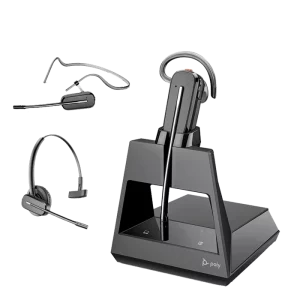 Poly Voyager 4245 Office Convertible HeadsetRated 5.00 out of 5(Desk Phone + PC + Mobile) & Teams VersionSelect options This product has multiple variants. The options may be chosen on the product page
Poly Voyager 4245 Office Convertible HeadsetRated 5.00 out of 5(Desk Phone + PC + Mobile) & Teams VersionSelect options This product has multiple variants. The options may be chosen on the product page -
$318.23
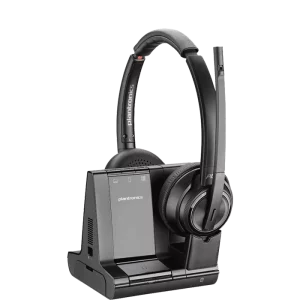 Poly Savi 8220 Office Wireless HeadsetRated 5.00 out of 5(Desk Phone + PC + Mobile) & Teams VersionSelect options This product has multiple variants. The options may be chosen on the product page
Poly Savi 8220 Office Wireless HeadsetRated 5.00 out of 5(Desk Phone + PC + Mobile) & Teams VersionSelect options This product has multiple variants. The options may be chosen on the product page -
$246.05
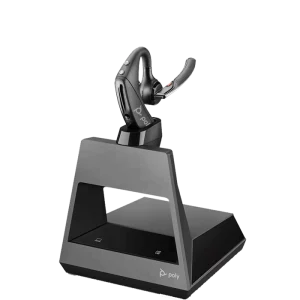 Poly Voyager 5200 Office 2-Way HeadsetRated 5.00 out of 5(Desk Phone + PC + Mobile) & Teams VersionSelect options This product has multiple variants. The options may be chosen on the product page
Poly Voyager 5200 Office 2-Way HeadsetRated 5.00 out of 5(Desk Phone + PC + Mobile) & Teams VersionSelect options This product has multiple variants. The options may be chosen on the product page -
$469.00
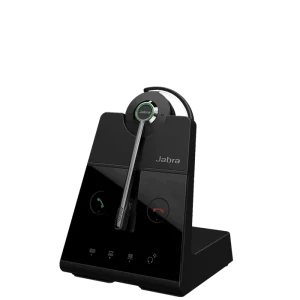 Jabra Engage 65 SE Convertible Wireless HeadsetRated 4.00 out of 5(Desk Phone + PC)Add to cart
Jabra Engage 65 SE Convertible Wireless HeadsetRated 4.00 out of 5(Desk Phone + PC)Add to cart -
$477.00
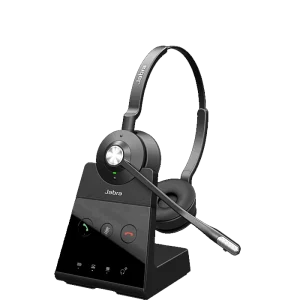 Jabra Engage 65 SE Stereo Wireless HeadsetRated 5.00 out of 5(Desk Phone + PC)Add to cart
Jabra Engage 65 SE Stereo Wireless HeadsetRated 5.00 out of 5(Desk Phone + PC)Add to cart -
$443.00
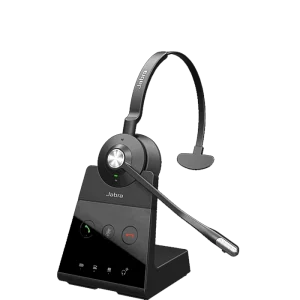 Jabra Engage 65 SE Mono Wireless HeadsetRated 4.20 out of 5(Desk Phone + PC)Add to cart
Jabra Engage 65 SE Mono Wireless HeadsetRated 4.20 out of 5(Desk Phone + PC)Add to cart -
$69.99
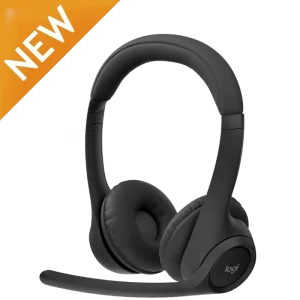 Logitech Zone 305 Wireless Native Bluetooth Headset(PC + Mobile) for TeamsAdd to cart
Logitech Zone 305 Wireless Native Bluetooth Headset(PC + Mobile) for TeamsAdd to cart
-
$99.99
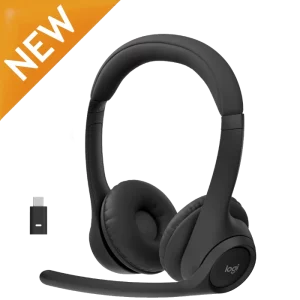 Logitech Zone 305 Wireless USB HeadsetRated 5.00 out of 5(PC + Mobile) & Teams VersionSelect options This product has multiple variants. The options may be chosen on the product page
Logitech Zone 305 Wireless USB HeadsetRated 5.00 out of 5(PC + Mobile) & Teams VersionSelect options This product has multiple variants. The options may be chosen on the product page -
$99.99
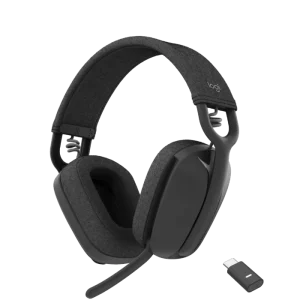 Logitech Zone Vibe Wireless Headset(PC + Mobile) & Teams VersionSelect options
This product has multiple variants. The options may be chosen on the product page
Logitech Zone Vibe Wireless Headset(PC + Mobile) & Teams VersionSelect options
This product has multiple variants. The options may be chosen on the product page
-
$304.03
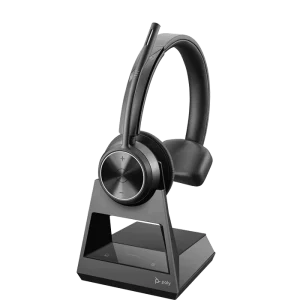 Poly Savi 7310 Office Wireless DECT HeadsetRated 5.00 out of 5(Desk Phone + PC) & Teams VersionSelect options This product has multiple variants. The options may be chosen on the product page
Poly Savi 7310 Office Wireless DECT HeadsetRated 5.00 out of 5(Desk Phone + PC) & Teams VersionSelect options This product has multiple variants. The options may be chosen on the product page -
$319.48
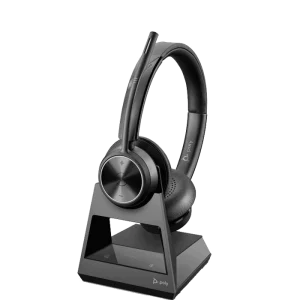 Poly Savi 7320 Office Wireless DECT Headset(Desk Phone + PC) & Teams VersionSelect options
This product has multiple variants. The options may be chosen on the product page
Poly Savi 7320 Office Wireless DECT Headset(Desk Phone + PC) & Teams VersionSelect options
This product has multiple variants. The options may be chosen on the product page
-
$304.03
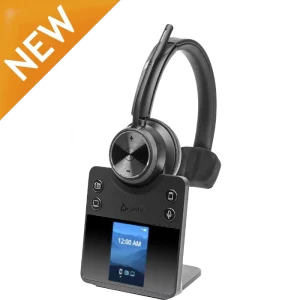 Poly Savi 7410 Office Wireless DECT Headset(Desk Phone + PC + Mobile) & Teams VersionSelect options
This product has multiple variants. The options may be chosen on the product page
Poly Savi 7410 Office Wireless DECT Headset(Desk Phone + PC + Mobile) & Teams VersionSelect options
This product has multiple variants. The options may be chosen on the product page
-
$318.24
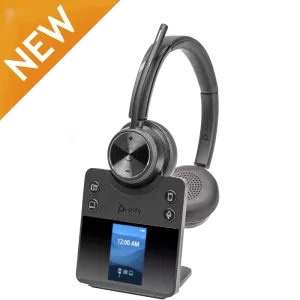 Poly Savi 7420 Office Wireless DECT Headset(Desk Phone + PC + Mobile) & Teams VersionSelect options
This product has multiple variants. The options may be chosen on the product page
Poly Savi 7420 Office Wireless DECT Headset(Desk Phone + PC + Mobile) & Teams VersionSelect options
This product has multiple variants. The options may be chosen on the product page
-
$304.02
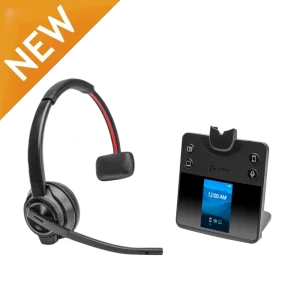 Poly Savi 8410 Office Wireless DECT Headset(Desk Phone + PC + Mobile) & Teams VersionSelect options
This product has multiple variants. The options may be chosen on the product page
Poly Savi 8410 Office Wireless DECT Headset(Desk Phone + PC + Mobile) & Teams VersionSelect options
This product has multiple variants. The options may be chosen on the product page
-
$360.88
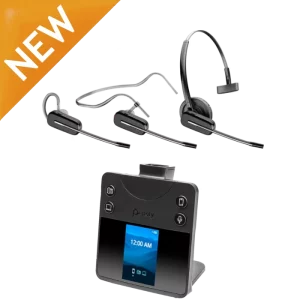 Poly Savi 8445 Office Wireless DECT Headset(Desk Phone + PC + Mobile) & Teams VersionSelect options
This product has multiple variants. The options may be chosen on the product page
Poly Savi 8445 Office Wireless DECT Headset(Desk Phone + PC + Mobile) & Teams VersionSelect options
This product has multiple variants. The options may be chosen on the product page
-
$132.22
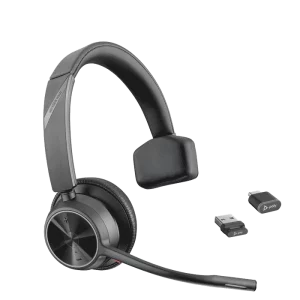 Poly Voyager 4310 UC HeadsetRated 5.00 out of 5(PC + Mobile) & Teams VersionSelect options This product has multiple variants. The options may be chosen on the product page
Poly Voyager 4310 UC HeadsetRated 5.00 out of 5(PC + Mobile) & Teams VersionSelect options This product has multiple variants. The options may be chosen on the product page
Busy office professionals don’t have the time to have multiple headsets lying about on their desks as their next incoming call starts ringing, leaving them scrambling to figure out which headset is connected to what device. All of this can be avoided with the right headset.
Multi connectivity wireless headsets will connect to two devices or more at the same time, leaving you only a single headset to manage and charge each night.
Wireless headsets that connect to your deskphone and PC computer.
This is the most common as it lets you connect to your office phone to answer typical inbound/outbound calls while adding the connection for computers for VoIP softphones and video conferencing.Another advantage of connecting to a PC computer is you now have the ability to adjust your headset settings via a web interface and receive occasional firmware updates to continually improve the performance of your headset. Many newer wireless headset bases also have a ringer built into the base.
When your VoIP softphone rings you will hear it from the base and in the headset, making sure you never miss an incoming call. The base has a compatibility slide switch making it compatible with over 800 desk phones, along with adjustments for speaker and microphone volume settings.
Wireless headsets that connect to your deskphone, PC computer and cell phone.
This adds a great convenience for business professionals that spend time on their cell phone as well. You will find two configurations when you add cell phone capability:- One option will be a headset that will pair directly to your cell phone (via Bluetooth) allowing you to be mobile outside of your office. With this option, you gain the freedom to take the headset with you while you travel in the car or for use later at another location.
- The second option pairs your cell phone with the headset base, which stays on your desk. This limits your headset usage while on your cell phone to your office but gives you the advantage of greater wireless range in the office. Typically with this option, your cell phone will remain on your desk next to the headset charging base and use Bluetooth technology for audio transmission. Your headset and charging base will use DECT technology for the much greater wireless range within your office.
Multiple Connectivity
When using a headset that connects to multiple devices, you typically set one device to be your default. Most users will make their office phone the default device, so pushing the on button on the headset will give you dial tone on your desk phone (an optional EHS cable or lifter may be required).Depending on your headset and the settings you choose, you can receive call alerts from secondary devices or not be disturbed. You can long hold specific buttons to put the original call on hold and take the second call. Select models will bridge two calls from two devices to form a conference call.
With many options and controls, make sure to take the time to thoroughly read your user manual to fully understand how your specific headset will work so you're comfortable with call management to get the most out of your wireless headset investment.
Wireless Headset Performance vs. Wearing Style
When looking for a wireless headset that works with office phones and PC’s, you will need to decide which is more important, performance or wearing style.Headset with One Ear
If you prefer better audio, better noise-canceling capabilities, better talking-time and better distance, a wireless headset that has a headband that sits over your head will always perform best.A headband over your head helps support more weight allowing manufacturers to increase the ear cup size for better audio quality and house a larger battery. A larger headset battery equates to more talk time and better distance with superior technology.
Headset with Two Speakers
Have you considered a headband over-the-head headset covering both ears? Many feel this is the best when it comes to audio quality and the ability to focus on your caller.Using a binaural wireless headset with your office phone will not only lower the overall volume in an open office environment, it also allows the users of the headset to hear without distraction. Newer technology will even take it a step further with active noise canceling (ANC), which uses microphones in the ear cups to monitor and understand your background noise.
The headset then creates the opposite sound wave and transmits that into your ear canal to essentially cancel out unwanted background noise.
Headset Over Your Ear / Lightweight Headband
If you prefer a headset which is light-weight, low-profile or simply nothing over your head, you will want to focus on over-the-ear, in-the-ear or convertible headsets (include multiple wearing options) that have nothing over your head, or allow a headband to snap into place.In this scenario, a headband is only made of plastic and used to support the headset versus the above example where the headband is permanently attached to the ear cup and supports larger batteries and performance technology.
Noise Canceling Microphones
When considering wireless headsets for your office phone, noise-canceling microphones are the norm but have varying degrees of ability. The better the technology and number of microphones, the more background noise will be filtered out, allowing your caller to hear you more clearly.In Summary
Selecting a business-grade wireless headset for your office phone, PC desktop or laptop and smart phone or tablet can be one of the greatest productivity boosters you can buy for your company, call center, or contact center.Originally this high-end technology was solely for management, but with increased productivity, it’s becoming a necessity for any office worker that juggles between calls and devices. Managing one headset to cover multiple devices is critical in today's busy office environment.
